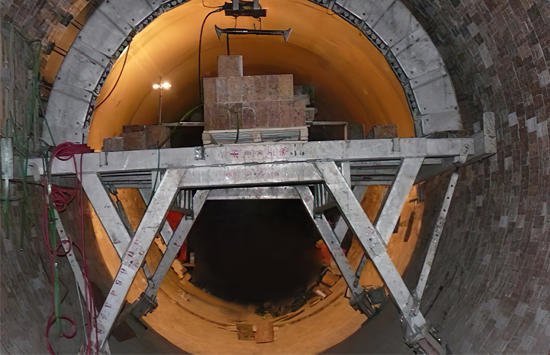- Preparation of refractory mud:
(1) In order to determine the setting time, initial setting time, viscosity and water consumption of different refractory slurries, pre masonry test should be carried out before masonry of refractory bricks.

(2) The same special mud box shall be used as far as possible to prepare refractory mud of the same material. When replacing different refractory mud, the mud box shall be thoroughly cleaned. Avoid using wrong refractory mud materials when laying bricks, or performance degradation due to mixing of refractory mud materials, or even scrapping due to quick setting. The same special container should be used for the transportation of refractory sludge. The refractory sludge should be cleaned thoroughly when changing the type of refractory sludge.
(3) The mixture ratio of water glass and water is 3:1 for the preparation of refractory mud. The dosage should be accurate, the mixture should be stirred evenly, and the mixture should be used as soon as it is mixed.
(4) When the ambient temperature is too low, heating water can be added for mixing to ensure the appropriate preparation temperature of refractory slurry.
(5) After the preparation of the air hardened refractory mud, ensure that it has a masonry time of more than 30 minutes. It is not allowed to add water to the prepared refractory mud at will, and it is not allowed to continue to use the initially set refractory mud.
(6) The fullness of mortar joint refractory slurry shall be more than 95%, and it is required to be filled tightly.
(7) It is found that the shell of the rotary kiln can not be aligned. For example, in the interior of the kiln, the dry masonry is aligned with adjusting iron, the wet masonry is aligned with refractory slurry, and other parts are usually aligned with refractory slurry.
(8) The preparation of refractory mud shall be in strict accordance with the requirements of the manufacturer's refractory mud preparation instructions, and the construction of refractory mud shall match with the corresponding refractory brick materials.
- Wet masonry:
(1) Firebrick masonry requires full and dense refractory slurry, and the width of brick joint should meet the design requirements, generally 1 ~ 2mm.
(2) After the firebrick is placed and kneaded in place, use a wooden hammer or rubber hammer to strike and align.
(3) The supporting plate, flange plate and other Metalware shall not directly contact with the refractory brick. The surface contacting with the refractory brick shall be coated with a layer of refractory mud. The expansion joint shall be reserved under the supporting plate, and the width of the expansion joint shall meet the design and construction requirements.
- Lock brick in arch ring:
(1) When the arch roof or round wall of rotary kiln is built, the last 5-6 bricks are built in each circle. Dry laid refractory bricks are built first, and different transformation combinations are tried to meet the requirements of wedge tightening. If it can't be wedged tightly, the refractory brick should be processed, and then the processed brick should be added to pre build dry pendulum and wedged tightly again.
(2) The processing surface shall not face the shell to avoid the failure of effective bonding between the refractory brick and the shell.
(3) The location of the lock brick should be 2 ~ 3 firebricks away from the processing brick, and should not be at the vault.
(4) The last brick of each circle is wedged in from the side, and the last lock brick is wedged in from the front. The original brick shall be used as far as possible to ensure the strength of the lock brick and reduce the friction when the lock brick is wedged in.
- Selection and processing of refractory bricks for arch ring
(1) Brick cutting machine must be used to process brick to ensure its smooth surface, and the missing edges and corners are required to be consistent with the original brick.
(2) The length and width of the processed brick should be more than half of the original brick and 70% of the original brick to ensure that the processed brick has enough strength. If the size of one refractory brick is less than that specified above, two refractory bricks shall be used.
(3) It is not allowed to process bricks, chisel bricks or knock them as anvil on the built masonry.
- Dry masonry:
(1) The requirements of dry masonry are similar to those of wet masonry. In the final wedge operation, the steel plate with thickness of 2mm shall be used, and the wedge angle of less than 6 ° shall be polished at the wedge end to wedge it tightly. It is required that the surface of wedged steel plate shall be smooth without concave convex, burr and corrosion.
(2) Only one steel plate can be wedged into each brick joint, and the steel plate shall not be wedged into the brick joint of the lock brick.
- Setting of expansion joint:
(1) Generally speaking, the space between the reserved expansion joints should be between 1.5 mm and 2.0 mm.
(2) The reserved position of expansion joint shall be in strict accordance with the requirements of design and construction drawings. If there are no special requirements, the stressed part of firebrick shall be avoided.


 Wechat Us
Wechat Us